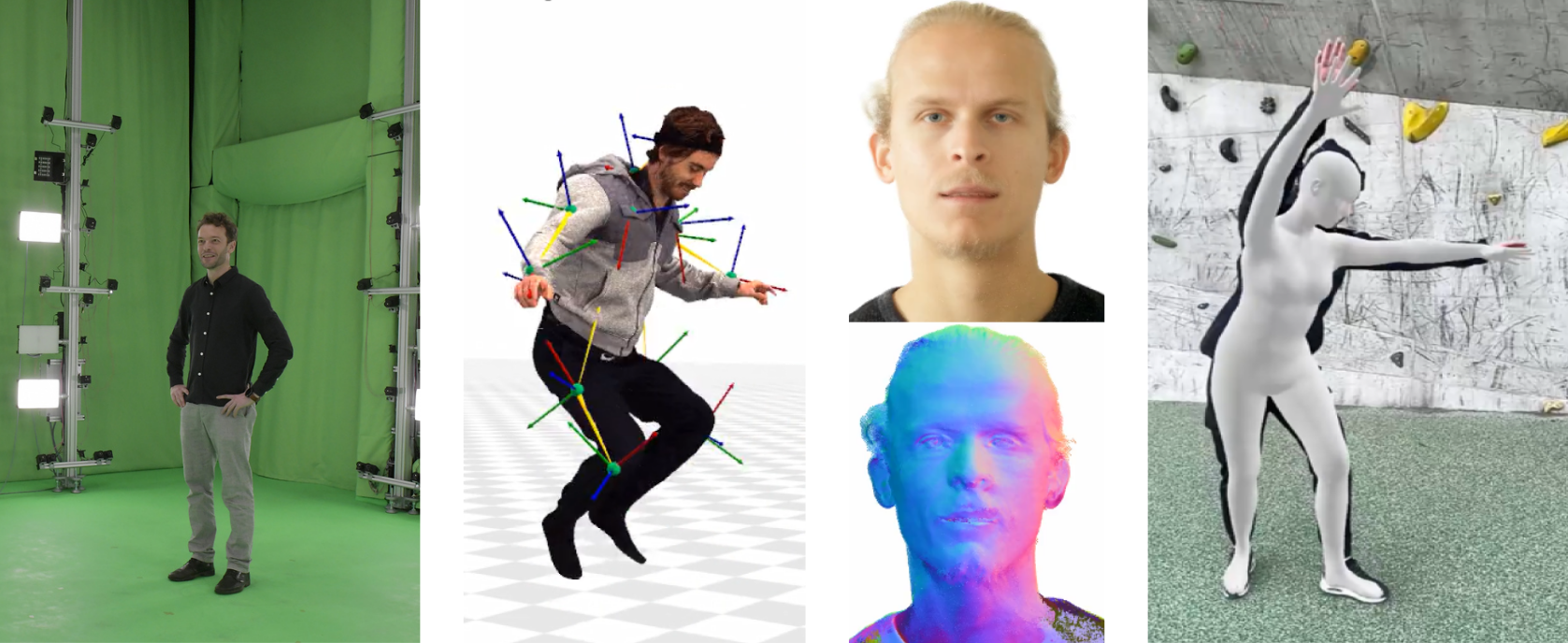Overview
Performance Capture refers to the technology and processes involved in digitally recreating the movements, poses, gestures, appearance, and expressions of a human and its surroundings. Methods to do so typically use body-worn sensors, RGB and depth cameras, and advanced Computer Vision algorithms to record the intricate details of a performer's movements.

Objective
The goal of the seminar is to familiarize students with exciting new research topics in this important area but also to teach basic scientific writing and oral presentation skills.
Content
Performance Capture refers to the technology and process involved in capturing and recreating the movements, gestures, and expressions of a human and its surroundings. It's a relevant field for various applications, including animation, virtual reality, and video games. It involves using advanced sensors, cameras, and computer vision algorithms to record the intricate details of a performer's movements, typically focusing on their face, body, clothing, and interactions. We will also explore the technology and applications behind high-end, multi-view capture stages, as the Volumetric Capture Lab recently opened.
Papers from scientific venues such as CVPR, ICCV, ECCV, and SIGGRAPH will be examined in-depth to explore the latest research in the field. Students present and discuss the papers to extract techniques and insights that can be applied to software & hardware projects.
Format
The seminar is structured to encourage critical reading and discussion of the papers, and the attendance in the weekly meetings is mandatory. We use a case-study format where all students read the same paper each week but fulfill different roles and hence prepare with different viewpoints in mind ("presenter" and “reviewer”). The final deliverables include:
- 1x time: 20 minute presentation as a Presenter, giving a short presentation about the paper that you prepare in depth.
- 1x time: a critical review of the paper as a Reviewer, analyzing its strengths, weaknesses, methodology, and impact within the field.
- Every week: All students come up with an alternative title and three questions/comments about the paper before the start of the seminar
Slides
(use ETH credentials to access the file)
